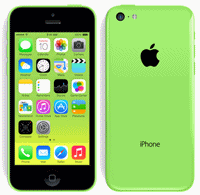Challenges ahead for Apple from new open mobile operating systems
12 Sep 2013
The new 5S has dazzled onlookers with its fingerprint reader, while adding a better camera and a faster processor, but Apple should go beyond product innovation and develop its strategy further as well.
 Commoditisation of mobile hardware and transformations in the way apps are delivered will reduce Apple's ability to reap profits from smartphones.
Commoditisation of mobile hardware and transformations in the way apps are delivered will reduce Apple's ability to reap profits from smartphones.
The iPhone launch event suggested that Apple's strategists do not anticipate the rules of the game to change anytime soon, banking on the mobile market to carry on as usual.
The writing is on the wall, however. Not only are smartphones becoming harder and harder to distinguish, with price competition favouring firms producing at lower costs, like Lenovo or ZTE. But the way that value is captured in the industry is also about to change. And it is unclear whether Apple will get a look-in.
Apple has powered ahead in the smartphone era with its most recent financial report revealing that the iPhone accounted for $18.2 billion (£11.6 billion) of its sales from April to June, 50 per cent of its total revenue for the period. The tech giant's app ecosystem has seen it dominate, but this advantage could erode in the future.
After the lion's share of profits moved from handset manufacturers to firms that controlled the link between the operating system and the app store, it is about to move on to the apps themselves. This is facilitated by new challengers in the operating system domain.
Meet the new crop of open mobile operating systems - Sailfish, developed by Jolla, a Nokia offshoot; Firefox, developed by Mozilla, as in the web browser; Ubuntu, developed by Canonical, a British firm focused on Linux systems; and Tizen, developed by Samsung, Intel, and others. While there are subtle differences between these OS entrants, they have all recognised important trends.
''One is that developers prefer to write applications once, avoiding the tedious adaptation to different platform languages used by iOS, Android, Windows Phone, and Blackberry 10. HTML, a programming language from the computing world, holds out the promise of standardisation. While iOS and others increasingly allow for HTML apps, developers are still beholden to customisation and authorisation requirements. The new OS crop largely does away with this, ensuring cross-platform interoperability.
 In addition, a next-generation OS like Ubuntu also supports other common computing languages and can run Android apps. This trend points towards an eventual unbundling of the value chain; users will be able to download any app (or link to a cloud app) from any app store (or directly from the source) to any operating system and device (not just phones, but also tablets and PCs). App developers thus no longer have to share as much of their income with powerful middle men. The nexus of operating system and app store will no longer control the rest of the value chain.
In addition, a next-generation OS like Ubuntu also supports other common computing languages and can run Android apps. This trend points towards an eventual unbundling of the value chain; users will be able to download any app (or link to a cloud app) from any app store (or directly from the source) to any operating system and device (not just phones, but also tablets and PCs). App developers thus no longer have to share as much of their income with powerful middle men. The nexus of operating system and app store will no longer control the rest of the value chain.
It means getting the right kind of handset will no longer be all-important, consumers will be able to download the same apps using any smartphone. The iPhone 5C, launched alongside the 5S, is Apple's first attempt to compete on price, but there are much cheaper handsets out there. Emerging-market vendors like Micromax or Karbonn currently set the low-price frontier. And once the open app market gets going, handset price competition could become crucial.
If only one big vendor, say Lenovo, committed to one of the new operating systems, it would boost the whole crop. Mobile operators are also keen to shake up the status quo. And big app developers such as Facebook may start to insist on writing in standard HTML only, leaving Apple and Google little choice but to open up their app stores.
Most market disruptions start small and are overlooked by established players as they are busy perfecting their approach to business as usual. By the time they notice, it is often too late. Investors, however, have high expectations. If any company is nimble enough to avoid such a fate it is Apple, who, after all, has a record of anticipating market disruption.













.jpg)






.jpg)









